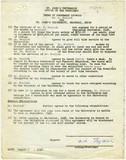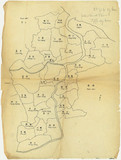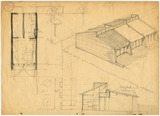Richard Paulick
Richard Paulick
I feel, that due to Shanghai having been cut off from communications for such a long period that I must have lost touch with recent developments. I have noticed this already previous to our outbreak of the war, and now in Shanghai for more than twelve years.
Richard Paulick in a letter to Walter Gropius, 27. August 1945
| Born | on 7 November 1903 in Roßlau, Germany |
|---|---|
| Died | on 4 March 1979 in Berlin, GDR in Berlin, GDR |
| Exile | China |
| Remigration | German Democratic Republic |
| Profession | Architect |
In June 1933, architect Richard Paulick reached Shanghai, where he would spend the next sixteen years of his life. He had already been able to gather his first experiences of modern, rational and experimental architecture during his studies under Hans Poelzig, as well as in the architectural bureau of Walter Gropius and in his cooperation with Georg Muche in the design the Steel House in Dessau. Following Hitler’s seizure of power and after being the victim of an attack by two men from the SA, he decided to emigrate. A friend of Paulick’s from his university days, Rudolf Hamburger, had been living in Shanghai since 1930 and he founded the company The Modern Home in 1932. Paulick was employed as an architect by the companies The Modern Home (until 1934) and Modern Home (1934-1936). Together with his brother Rudolf, he founded several companies: Modern Homes (1937), The Studio (1942), Paulick & Paulick Architects and Engineers (1943) and Modern Textiles (1948). Paulick employed refugees in his companies, which provided them the papers necessary for leaving the zone in the city district of Hongkou that the Japanese had established in 1943 for stateless refugees. In the winter semester of 1943, he became professor of interior design and city planning in the architecture department of the St. John's University in Shanghai, which had been founded by American missionaries. In 1941 he married his life partner Thea Hess, who had Jewish heritage. She had come with him to Shanghai. Richard Paulick did not possess a valid passport after 1938 and as such he was considered stateless until 1950. In 1949 he remigrated to East Germany, to Berlin. In the 1950 he worked on designs for the Berlin Stalinallee and the reconstruction of Dresden. He was responsible for the reconstruction of Hoyerswerda and Halle-Neustadt.
Further reading:
Thöner, Wolfgang: Zwischen Tradition und Moderne – Richard Paulick, das Bauhaus und die Architektur der zwanziger Jahre, in: Bauhaus-Tradition und DDR-Moderne. Der Architekt Richard Paulick (hrsg. v. Wolfgang Thöner und Peter Müller), München/Berlin: Deutscher Kunstverlag 2006.
Kögel, Eduard: Zwei Poelzigschüler in der Emigration: Rudolf Hamburger und Richard Paulick zwischen Shanghai und Ost-Berlin (1930-1950). Dissertation Weimar: Bauhaus-Universität 2006.






